Investing in an ice machine for tuna is a crucial step that many seafood processors overlook.
The truth is, when it comes to preserving the freshness and quality of their catch, most processors are at a loss.
An ice machine for tuna, however, can be the game-changer they need.
This vital piece of equipment separates those merely surviving in the industry from those who truly excel and thrive.
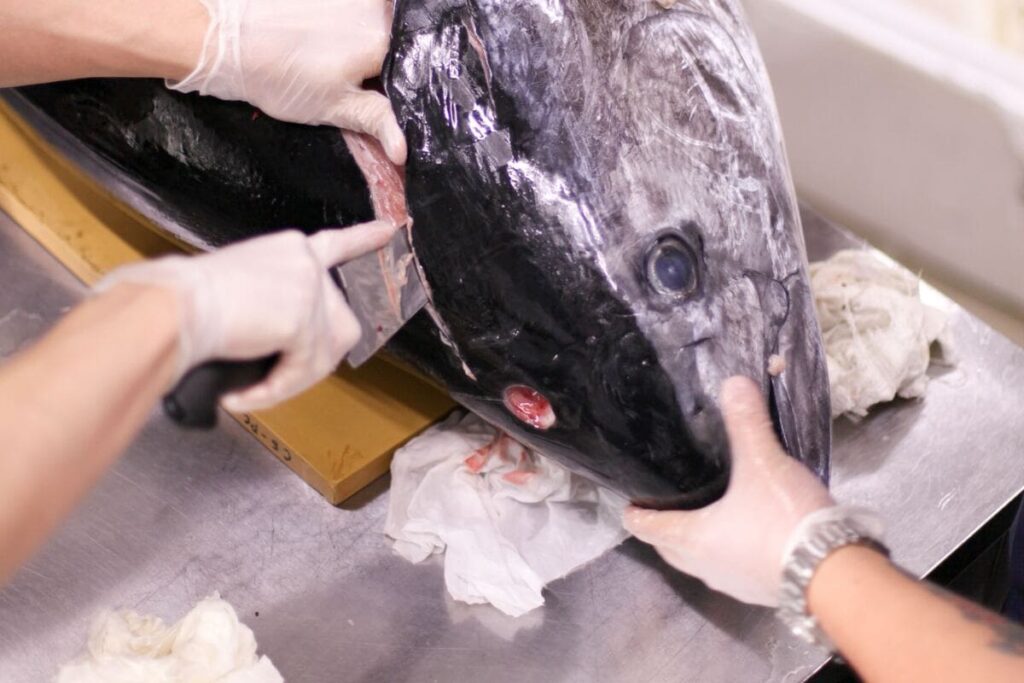
The Significance of Ice Machines in Tuna Processing
When it comes to the fishing industry, particularly for tuna – one of the smallest commercially exploited species, ice machines play a crucial role.
Ice machines’ freezing temperatures are key in preserving fresh tuna immediately after catch.
This process is vital not only for maintaining freshness but also for enhancing overall quality and taste.
Maintaining Freshness in Freezing Temperatures
Tuna caught from Indonesia’s Fisheries need immediate cooling to prevent spoilage and degradation.
Ice machines provide this essential service by rapidly lowering the fish temperature below ambient levels.
Promoting Quality Fish Products Through Proper Preservation Methods
Freshly caught skipjack or bluefin tunas undergo rapid changes if not preserved properly; hence using an efficient ice machine becomes critical during processing.
This ensures consumers receive high-quality canned tuna or other fish products without compromising on flavor and texture.
In essence, Investing in trustworthy commercial ice machines is the secret ingredient to upgrading product quality and wowing customers in global fishery research projects. Let’s reel in sustainable practices together!
We will now explore some potential risks associated with these indispensable tools used extensively across fast food restaurants based worldwide, especially when they aren’t maintained correctly.
Unveiling the Dangers Lurking in Commercial Ice Machines
The utilization of ice machines, mainly in eateries and seafood plant, is a prevalent custom.
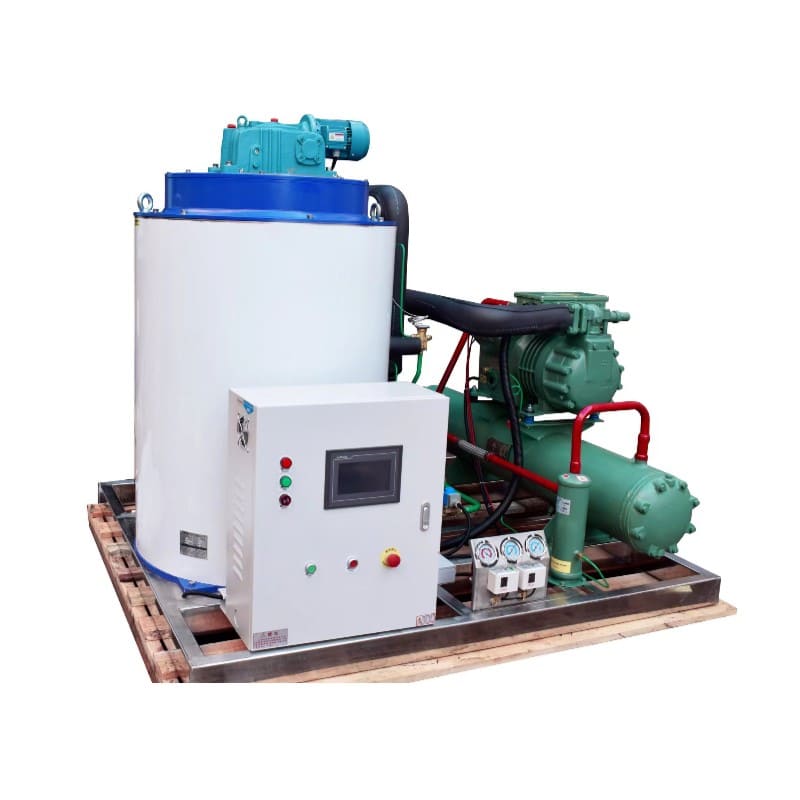
However, recent findings reveal high levels of potentially dangerous bacteria lurking within these seemingly innocuous appliances.
For instance, the research discovered contamination with E. coli and Salmonella.
This issue arises primarily due to a lack of regular cleaning and maintenance routines.
Similarly, studies have shown that restaurant ice machines can harbor coliform bacteria or even listeria.
It serves as a potential breeding ground for harmful pathogens if not properly handled or cleaned regularly.
Mitigating Risks Associated with Contaminated Ice
To mitigate such risks from contaminated ice machine units,
- Frequent Inspection: Restaurants must ensure their restaurant ice machines undergo frequent inspections.
- Routine Cleaning: A thorough cleaning each week helps eliminate any bacterial buildup.
For customers too there are ways to protect themselves against this hidden health hazard.
Customers could request no-grab ice when dining out or avoid self-service machines altogether where possible.
These practices will significantly reduce exposure risk while ensuring safety standards align with industry guidelines.
The goal here is to have an enjoyable meal without worrying about what might be hiding inside your glass.
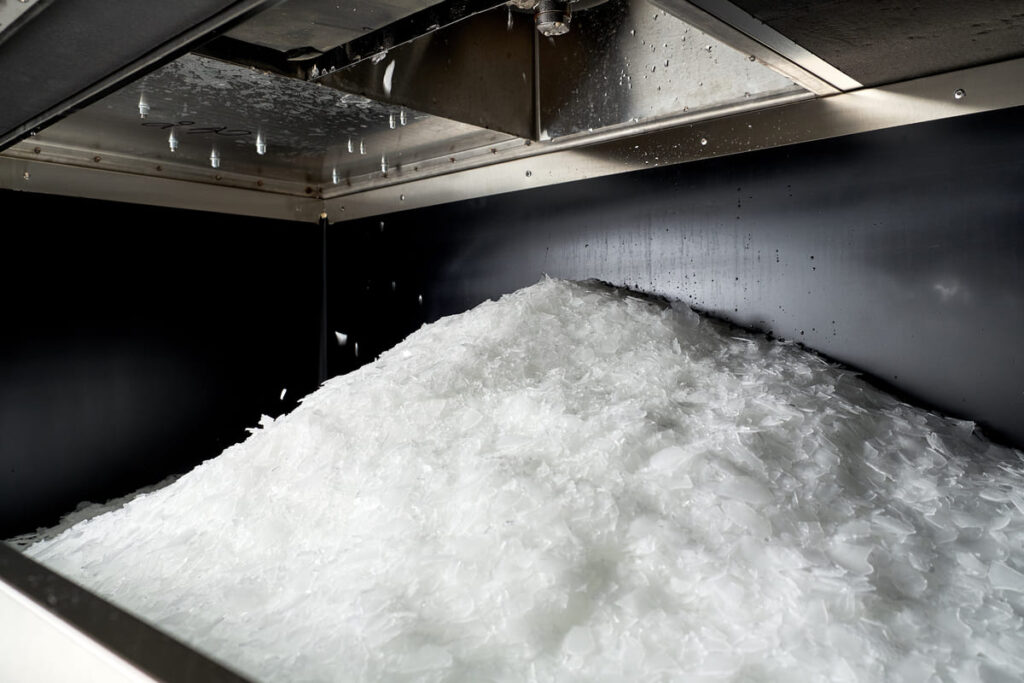
Understanding Global Tuna Catch Trends
A global fisheries research initiative led by experts has shed light on the dynamics of tuna fishing. This fishery drove industrial tuna fishers to focus their efforts primarily on certain species.
The smallest commercially exploited tuna, known as skipjack, is one such target. It represents about half of the global catch according to a recent global tuna catch database.
This trend isn’t random or accidental; it’s influenced heavily by market demands and processing methods. For instance, canned tuna remains popular worldwide due to its long shelf life and versatility in dishes.
In contrast with this popularity though are concerns regarding sustainability and stock health. Skipjack can withstand enormous fishing mortality but there’s an ongoing debate among scientists whether they’re being overfished or not.
Mitigating Risks Associated with Contaminated Ice
Maintaining fresh quality for these high-demand products like canned skipjack tunas from Indonesia Fisheries plants requires proper handling practices during transport which includes ice machines’ freezing temperatures keeping them at optimal conditions throughout the journey till reaching consumers’ plates.
In our next section, we will delve into how shifting consumer preferences impact demand for different types of processed seafood items, including a shift away from traditional cans towards vacuum-packed options. These vacuum-packed options offer unique flavors while still preserving freshness just as effectively, if not more so, than older methods used previously.
The Shift from Canned Tuna to Vacuum-Packed Fish Products
As global consumer preferences evolve, the demand for canned tuna, once a staple in many households and fast food restaurants based worldwide, is witnessing a significant decline.
This shift has led to an increased preference for vacuum-packed fish products that offer enhanced flavor profiles and convenience of storage.
Rising Consumer Demand for Freshness & Flavor
A major factor driving this change is consumers’ growing awareness of freshness.
Vacuum packing preserves the taste and texture of fresh tuna better than traditional canning methods.
how these packs maintain ice machine’s freezing temperatures efficiently ensuring longer shelf-life.
Economic Impact on Fisheries & Processing Plants
This trend impacts not just product offerings but also production processes at fisheries globally including Indonesia Fisheries.
Fisheries are now investing more in sophisticated equipment like commercial ice machines capable of producing flake ice which best suits the vacuum packaging process as compared to block or cube forms used traditionally with cans.
Adopting new technologies while maintaining quality becomes crucial here.
Sustainability Concerns Driving Change
The sustainability aspect cannot be overlooked when discussing this transition.
Canning often involves cooking the fish before processing leading to loss of certain nutrients, whereas vacuum packing retains nutritional value intact making it a preferred choice among health-conscious buyers.
Sustainable Fishing Methods for Tuna
As the global tuna catch database reveals, overfishing is a pressing concern in today’s seafood industry.
The smallest commercially exploited tuna species are particularly vulnerable, due to their high demand and rapid reproduction rates that can withstand enormous fishing mortality.
The Role of Flexible Fishing Poles Overhead
In response to this issue, sustainable fishing methods have been developed. One such method involves using flexible fishing poles overhead – an innovative technique designed specifically for catching skipjack tuna without causing harm to other marine creatures like blue sharks, a species listed as vulnerable by international conservation organizations.
This approach not only minimizes by-catch but also promotes healthier fish populations overall. It allows fisheries to target specific schools of fish during feeding frenzies when they’re most active and abundant while avoiding non-targeted or endangered species altogether.
NOAA Fisheries provides more information on these techniques if you want further reading into how it works in practice.
Moving forward with sustainability at its core, Indonesia Fisheries has adopted these practices too. The use of flexible poles proves advantageous, especially amidst foaming tuna feeding frenzy situations where precision is key.
These measures go beyond simply protecting individual species – they help maintain balance within entire ecosystems which benefits all who rely on them, including commercial fishermen and consumers alike.
So next time you grab ice cold canned tunas off your ice machine remember: every choice we make impacts our world significantly.
Below we will explore potential concerns regarding Skipjack Tuna stocks despite current sustainable efforts.
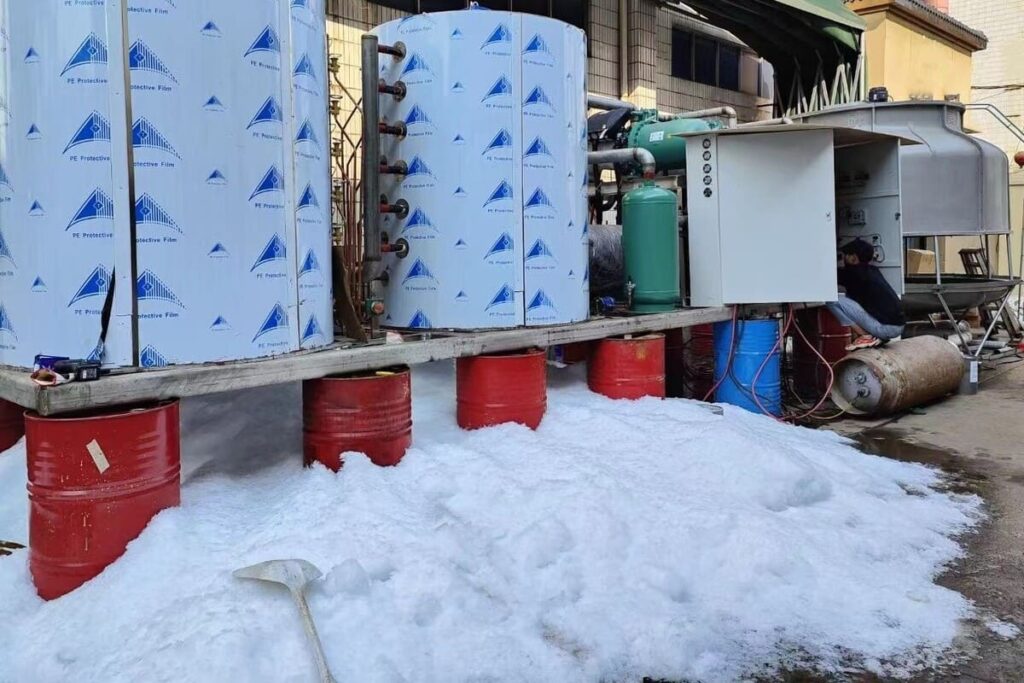
Future Concerns for Skipjack Tuna Stocks
The smallest commercially exploited tuna, the skipjack, is a vital component of global fisheries.
A recent research initiative led by experts in marine biology and fishery science reveals potential concerns about this species’ future sustainability.
Sustainability Challenges: The Impact on Indonesia Fisheries
Despite being able to withstand enormous fishing mortality rates, there are growing apprehensions surrounding skipjack stocks.
This robust fish has been an essential resource for Indonesia’s fisheries that utilize it in various products.
Data Trends from Global Tuna Catch Database Reveals Potential Decline
An analysis of data trends from the Global Tuna Catch database indicates a possible decline in these resilient creatures over time despite not currently being considered overfished.
This revelation could have significant implications if left unaddressed due to its impact on fresh tuna supply chains worldwide, including those feeding into canned tuna production lines or supplying ice machines with fresh catch daily at restaurants globally.
Navigating Future Implications: A Call To Action For Sustainable Practices In the Fishing Industry
To mitigate such risks and ensure the long-term availability of this valuable seafood commodity, stakeholders across sectors need to adopt more sustainable practices now rather than later.
Policies aimed at ensuring responsible fishing methods should be implemented swiftly while also encouraging innovation within industry operations like using efficient ice machines capable of maintaining optimal freezing temperatures, thus preserving quality even during foaming tuna feeding frenzy periods when catches tend to peak.
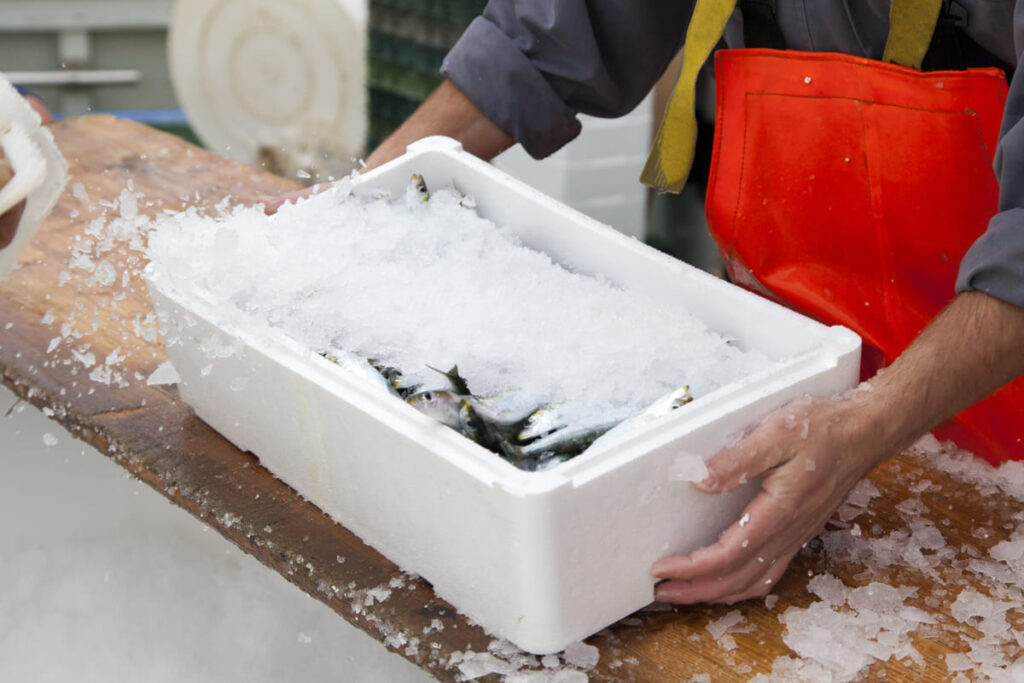
The Importance of Proper Handling Food Practices
When it comes to maintaining the quality and safety of food products like fresh tuna, proper handling is key.
This not only ensures that consumers receive high-quality fish but also helps prevent cross-contamination between germ-y items and food products.
Adopting Best Practices from Reputable Sources
To uphold these standards, restaurants can refer to guidelines provided by reputable sources such as QSR Magazine’s notes on food service practices.
These resources provide valuable insights into how best to handle seafood delicacies like the smallest commercially exploited tuna without compromising their freshness or risking bacterial contamination due to improper handling methods.
Maintaining Cleanliness During Ice Grabbing Process
A crucial part of this process involves ice grabbing. The way we grab ice plays a significant role in ensuring its cleanliness during handling, especially for fast-food restaurants where self-service machines are common.
- Prioritize using clean utensils or gloves when retrieving ice from restaurant ice machines.
- Avoid touching other surfaces before grabbing the ice which could lead to potential cross-contamination.
- Routinely sanitize all equipment involved including the ice machine at regular intervals throughout the day.
FAQs in Relation to Ice Machines for Tuna
How long can you keep tuna on ice?
Tuna, when properly iced immediately after the catch, can stay fresh for up to two days.
How do they catch tuna commercially?
Commercial fishing of tuna typically involves methods like purse seining and longlining. Pole-and-line fishing is a more sustainable alternative.
How do you freeze fresh tuna?
Freshly caught tuna should be cleaned, filleted, and then flash frozen at -60°C (-76°F) within hours of capture to maintain quality.
How do you pack tuna with ice?
Packing involves layering the fish in crushed or flake ice immediately after it’s been gutted and washed. This helps preserve freshness during transport.
Conclusion
Ice Machine for Tuna: Ensuring Quality in Seafood Processing
Explore the vital role of an ice machine for tuna in maintaining seafood freshness. Uncover global catch trends and sustainable fishing methods!
Ice machines play a pivotal role in preserving the freshness and quality of tuna.
The dangers lurking in restaurant ice machines can be mitigated with proper cleaning and maintenance.
Tuna catch trends are shifting globally, driven by changes in consumer preferences from canned to vacuum-packed fish products.
Sustainable fishing methods for tuna are less popular but hold significant environmental benefits.
Proper food handling practices are vital to prevent cross-contamination that could compromise the quality of fresh tuna.
If you’re looking for a reliable solution to maintain your seafood’s freshness, consider investing in our flake ice machine. It’s designed specifically for commercial and industrial use, ensuring top-notch performance while keeping your produce at its best. Visit us today and discover how we can elevate your seafood processing game!


